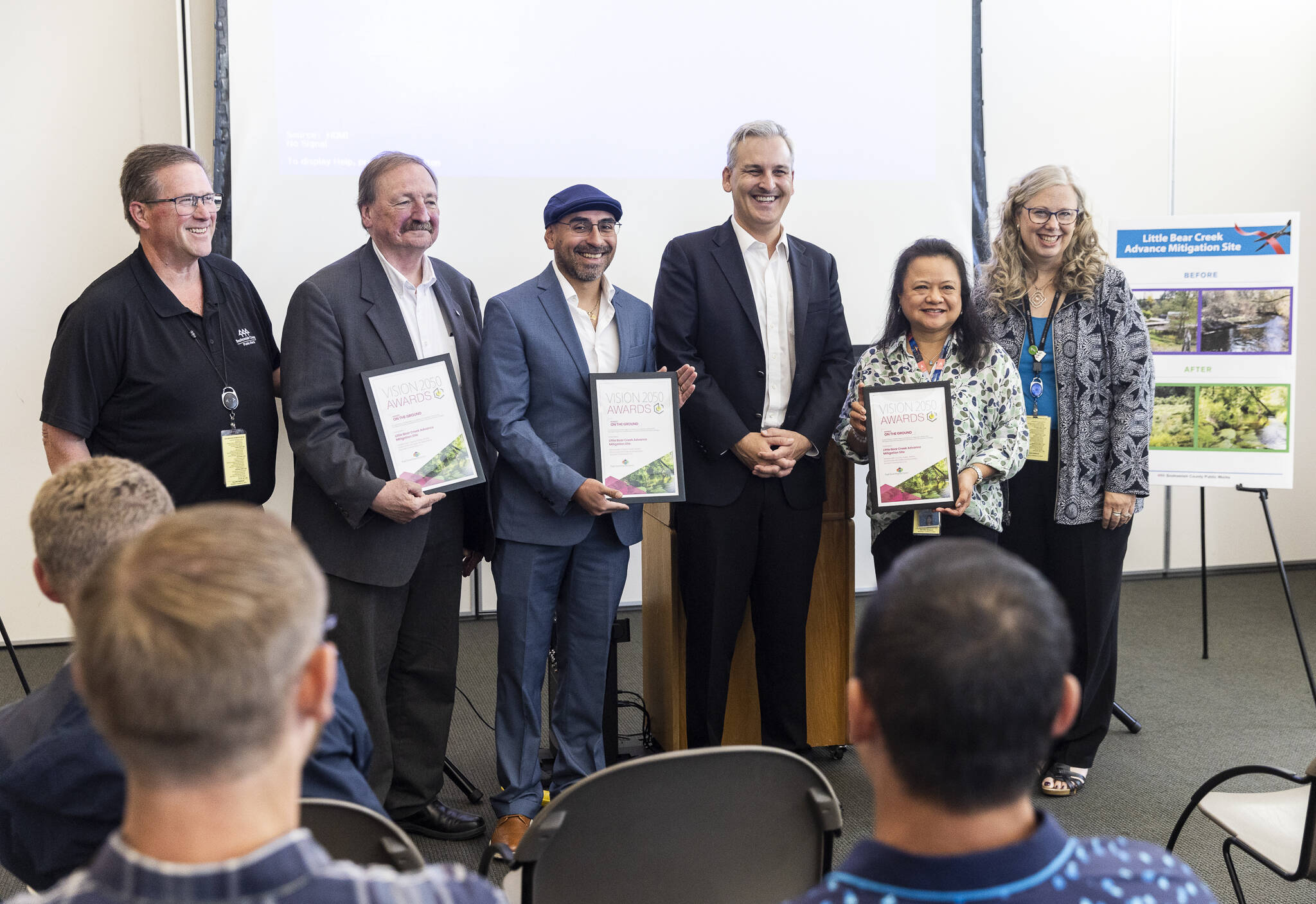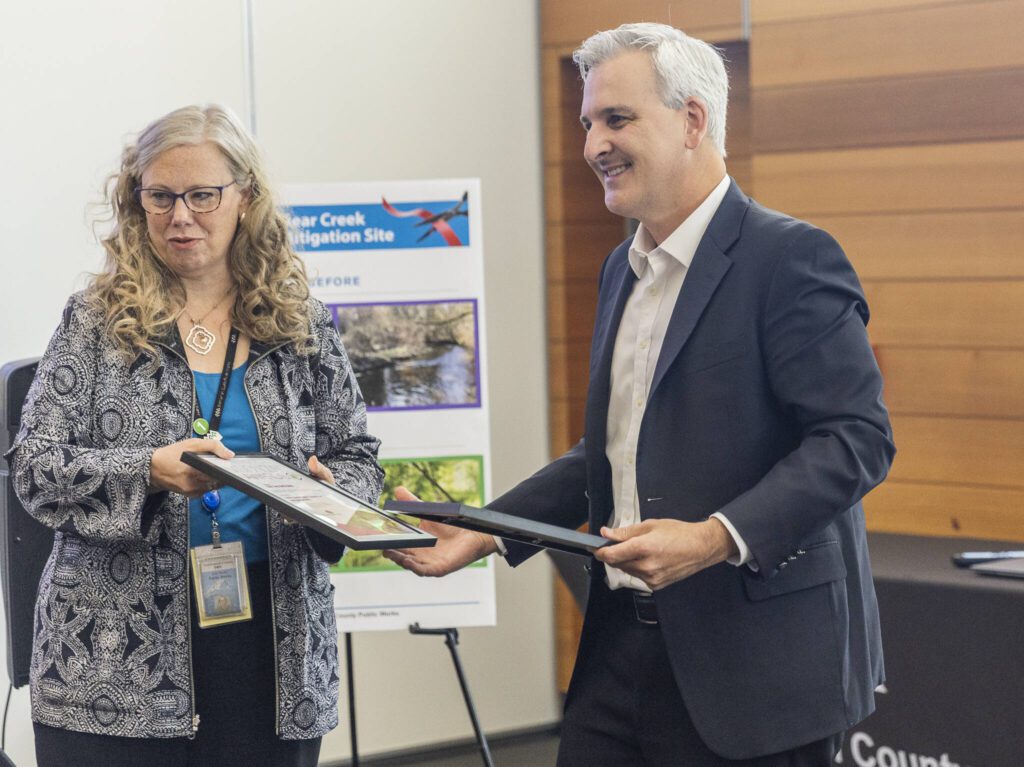EVERETT— Snohomish County Public Works received an award on Monday for restoration work along Little Bear Creek.
The Puget Sound Regional Council, a long-term planning group working with cities, tribes and other agencies within Snohomish, King, Kitsap and Pierce counties, recognized the county’s environmental stewardship with a Vision 2050 award, celebrating innovative solutions for comprehensive planning.
The county designated the 17-acre site near Woodinville as an advanced mitigation effort, serving as a bank of preserved ecological function to counteract the impacted habitat area adjacent to future Public Works’ transportation projects.
“This project fosters safe, sustainable development and responsible resource management,” Public Works Director Kelly Snyder said on Monday. “We want to figure out how we can do more of these [projects], because what we have to do in the future, particularly in the urban area, is really going to need to be offset by these projects.”
Between 2020 and 2044, Snohomish County’s population is expected to grow to over 1.1 million residents, prompting planners to determine how to support more people while safeguarding the region’s environment.
In 1989, Washington implemented a “no net loss” policy for wetlands, meaning that regardless of developmental needs, administrations and agencies across the state need to prioritize protecting wetland acreage and function.
Washington’s Department of Ecology works with the Environmental Protection Agency and U.S. Army Corps of Engineers to create mitigation standards, outlining how developers and municipalities must account for how new infrastructure affects existing wetlands, and what options they have to compensate impact.
In an overview video of the Little Bear Creek project, senior environmental planner Zan Roman explained the county’s reasoning behind proactively investing years of time and millions of dollars into the mitigation project.
“Projects, like road widening, bridge installations, impact streams and wetlands to some extent, but it’s very difficult to mitigate those impacts on site,” he said. “[Little Bear Creek] gives an opportunity to holistically, at a larger scale, improve water quality, hydrology and habitat functions, a large, rare wetland that can sufficiently offset those smaller impacts throughout the region.”
Little Bear Creek cost approximately $4 million, but the county expects to save up to $30 million in future mitigation costs for an estimated 11 planned Public Works projects. The first two projects include improvements to Alderwood Mall Parkway and the 43rd Avenue Southeast corridor.
“I like comparing it to like a savings account, where you put in money today to get the benefits tomorrow,” said Oscar Fuentes, county design engineer.
The county planted over 22,000 native plants during the restoration process, providing a natural filtration system for the salmon-supporting creek. The team also added large woody debris, engineered new wetland areas and regraded parts of the site to create better water flow.
Over the next decade, county biologists will monitor the area, making sure the area continues to mature and develop into high-functioning wetland habitat.
“Our watershed is so highly developed that a resource like [Little Bear Creek], where we have 17 acres of protected, high-functioning land, is a really rare thing to find,” Roman said. “We hope that [Little Bear Creek] serves as a model for other counties and ourselves to continue to create these large mitigation sites.”
A previous version of this story incorrectly spelled Snohomish County Public Works Director Kelly Snyder’s name.
Eliza Aronson: 425-339-3434; eliza.aronson@heraldnet.com; X: @ElizaAronson.
Eliza’s stories are supported by the Herald’s Environmental and Climate Reporting Fund.
Talk to us
> Give us your news tips.
> Send us a letter to the editor.
> More Herald contact information.


























